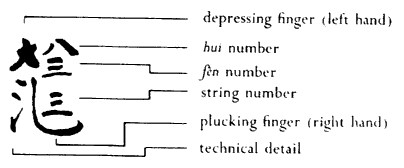Creative Artefacts
The Alternative Notation Project

Introduction
Notation is at the heart of western art music. Unlike most other forms of music, it is not solely based on aural methods of transmission, but on the ability of the composer/performer to understand conventionalised notation. This system has been developing for over a thousand years. Not surprisingly, the notation itself has quite a substantial effect on the music that is produced, not least because using notation, music can be much more complex and sophisticated if it does not have to be learnt aurally. Ensembles can coordinate too, where each member is playing a complex and sophisticated part. In Rock and commercial music, where the aural tradition dominates, there is plenty of scope for one level of complexity - the solo - but in this case, it is usually performed against the background of conventionalised and well understood harmonies, and where the rest of the band agrees to perform at a 'lesser level' for its duration.
See also the seminar Notations.

The Rules
- For the purposes of this exercise, alternative notation is notation that does not use conventional symbols, or uses such symbols in unconventional ways. Conventional notation is notation which obeys conventional rules. For this exercise, any form of jazz or rock notation is considered to be conventional.
- During the alternative notation sections, you are allowed to use conventional dynamic markings if you wish, but you are encouraged to think about other ways of representing this parameter.
- Your composition should be no longer than five minutes and no shorter than three minutes in duration.
- The composition should be notated in alternative notation for approximately one third of its duration. Another third should be notated conventionally. Another third should use both alternative and conventional notation together. You may use these 'sections' in any order and the 'sections' do not need to be single blocks, so, for instance, you could have three different ten second sections 'rotating' around each other.
- Your main objective should be the communication of ideas quickly and efficiently - one of the tests will be the speed and efficiency with which your score and parts communicate to the performers.
- When thinking about your composition, make sure that you consider the advantages and disadvantages of both conventional and alternative notations. Use notation to achieve specific goals and ideas that are best achieved through those notations. So, for instance, conventional notation is general good at communicating specific and precise ideas, whereas if you want to generate many notes or a particular feeling of freedom, alternative notation may well be easier to write, read and perform.
- You should provide a programme note for the workshop as well as a brief commentary concerning your use of the notation.
- Workshop performance of this project is compulsory. You may choose any instrumentalists that appeal to you. However, you are responsible for arranging for these instrumentalists to be at the workshop at the appropriate time.
- You are not allowed to perform in your own piece.
- You must use at least one non-vocal instrument, and a minimum of three instrumental performers
- Do not use any form of narrative.
 Some Ideas
Some Ideas
Spend some time looking over as many different scores as you can, including the examples included in the seminar Notations. You don't have to restrict yourselves to 'modern' scores, although they are often a prime source of material. You can look at early, pre-renaissance music such as Gregorian Chant, as well as 'transcriptions' of world musics. Remember, however, that you are looking for ways of notating music that is to be performed, not just looked at.
You may be interested in looking at the following:
- The New Music by Reginald Smith-Brindle
- Treatise by Cornelius Cardew
- Threnody for the Victims of Hiroshima by Penderecki
 General Notes from previous times this project has run
General Notes from previous times this project has run
One of the basic problems that emerged was people coming up with ideas that could more easily have bee expressed conventionally. One of the key points is that the notation should be the most efficient way, and this includes how easily the performers are able to play their parts. They will not be able to easily play 'new' notation.
Neither does 'alternative' notation necessarily mean 'weirdness'.
Remember that the symbols should be representative of sounds, they are not just there in order to be there! If you find yourself thinking that they are, you're doing something wrong.
 A few other general points:
A few other general points:
Awaiting material...
Good luck!